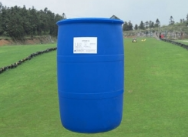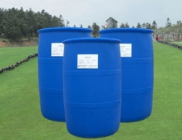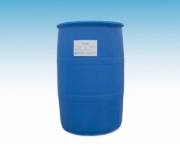The surfactants used in green detergents should be non-toxic, safe, non-hazardous, biodegradable and renewable green surfactants. Common surfactants that meet this requirement and have been commercialized are alkyl glucoside (APG), sodium fatty acid methyl ester sulfonate (MES), sodium fatty alcohol polyoxyethylene ether carboxylate (AEC), sodium aliphatic alcohol polyoxyethylene ether sulfate (AES), sodium aliphatic alcohol sulfate (AS), aliphatic alcohol polyoxyethylene ether (AE), fatty acid methyl ether. Ester ethoxylates (MEE), coconut oil amide propyl betaine (CAB), etc.

The hydrophobic groups of surfactants come from two sources: fossil materials and natural oils. Only natural oils and fats can be called real green surfactants. However, due to the shortage of petroleum resources and rising prices and other factors, the production of synthetic alcohols is very small. At present, most of the alcohol-based surfactants on the market (such as AES, AS, AEC, AE, APG, etc.) are made of natural alcohols.

Sodium linear alkylbenzene sulfonate (LAS) and sodium alpha-olefin sulfonate (AOS), which are widely used in laundry powder in China in recent years, have large production and sales of surfactants. Their hydrophobic groups are derived from petroleum, so they are not green surfactants. In the development of green detergents, we should try not to use or use less.

Alkylphenol polyoxyethylene ether (APE) is not easily biodegradable, and alkanolamide is questioned because of its safety. APE is a banned surfactant for green detergents.
Aliphatic alcohol polyoxyethylene ether sodium sulfate (AES) is the second largest surfactant in China after LAS, reaching 250,000 tons in 2010. AES is a very important anionic surfactant, which is widely used in liquid detergents. Almost all liquid detergents are inseparable from AES, such as detergent, laundry liquid, shampoo, body wash, hand wash and so on. In recent years, AES ammonium salt series products (AESA) have been introduced. Ammonium salts are milder than sodium salts and are increasingly used in personal cleaning products. The liquid detergent made from AES has the characteristics of good compatibility, strong detergency, rich foam, easy adhesion and low temperature stability. It is the first choice surfactant for most liquid detergents. In recent years, AES has also been used in laundry powder, but its dosage is not large. The main reason is that when the dosage of AES in laundry powder is large, the slurry viscosity is too high, powder spraying is not good, and powder forming is not good, sticking, poor fluidity. If the powder shaping problem of laundry powder is solved, the dosage of AES in laundry powder will be greatly increased.
A small amount of by-product 1,4-dioxane produced during AES production will be introduced into the product. 1,4-dioxane is a carcinogen, which is prohibited in cosmetics. AES with low content of 1,4-dioxane (<100mg/kg, 100% active substance) should be selected as green detergent. AES manufacturers should strictly control the content of 1,4-dioxane in the production process.